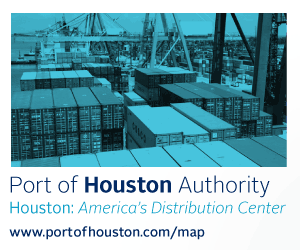
Tuesday, February 11, 2014
Drewry: Seattle - Tacoma port alliance might succeed with terminal ownership consolidation
Bigger ship sizes and increasing liner alliances have caused the port authorities of Seattle and Tacoma to try to ally their ports to combat the growing bargaining power of carriers, according to the latest issue of Container Insight by Drewry Maritime Research.
Seattle and Tacoma have applied to the U.S. Federal Maritime Commission for permission to share information and discuss matters such as rates of return, planning, utilization, operating costs and charges. This is a groundbreaking move, Drewry says, but notes that consolidation of terminal ownership will probably need to occur to pave the way for true success.
As with other U.S. West Coast ports, Seattle and Tacoma have to live with a system in which each major carrier tends to have its own terminal. Drewry said this arrangement made sense when carriers were smaller, but with today's mega carriers and alliances, the fragmentation of terminal capacity makes it harder to accommodate the massive collaborations of the P3, G6 and CKYH alliances.
Each of the Puget Sound ports handles less than 2 million TEUs, and Seattle has four container terminals and Tacoma five. The Canadian ports of Prince Rupert and Vancouver have been steadily winning market share from the two U.S. ports, Drewry reports.
Greater cooperation between the two port authorities, if approved by the FMC, will certainly help to better manage the situation but, in the short term, it will not change the nature of their physical assets.
For this to happen, separate applications made by the terminals to the FMC will need approval (like, for example, the one submitted jointly by the Seattle port authority and its three terminal operators in late 2013), or there needs to be some merger and acquisition activity, Drewry said.
Given carriers' current need to raise cash by selling assets such as terminals, this is a viable likely option but will take time.
For Seattle and Tacoma, it makes sense to work more closely together, especially as the two ports ultimately share the same owner, Washington State. The two Wash. ports could improve their market share by coordinating berthing windows between the two gateways, said Container Insight, or by dovetailing intermodal rail services, for example, which would require the involvement of the terminal operators and railroad companies and requisite regulatory approvals.
In conclusion, Drewry said that the move by the Seattle and Tacoma ports is a logical one, and if approved by the FMC, the common ownership of the port authorities gives the ports more chance of success than other possible port authority co-operation agreements. Fragmentation of terminal capacity in the two ports will make the task more complex and difficult though, and consolidation of terminal ownership will most likely need to be part of the solution.
More Newswire stories
Port of Portland to pay Hanjin Shipping to stay at port
Illinois River ice halts transport of grains by barge this week
Suez Canal sets cargo record Friday
Cargo ship sank Saturday, crew rescued
Home | The Magazine | Conferences | Port Handbooks | Newswire | Advertise | Ocean Schedules | Contact
CBN Archives | About CBN | Subscribe to CBN | Heartland Shippers’ Conference | CalExport Conference | Southeast Freight Conference | Port Productivity Conference | Pacific Northwest Ports Handbook | Golden Gates Ports Handbook | Southern California Ports Handbook | Buy Handbooks | Subscirbe to Newswire | Newswire Archives | Upload Files








